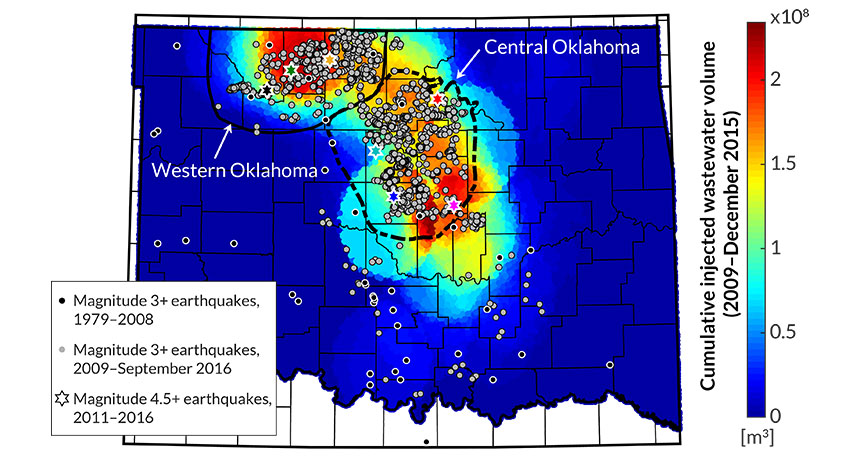
THE SHAKES In Oklahoma, disposal of massive amounts of wastewater into underground wells over the last few years (redder-shaded regions) caused an uptick in earthquake activity (gray dots) over historic rates (black dots), including several large quakes registering magnitude 4.5 or stronger (stars).
C. Langenbruch and M.D. Zoback/Science Advances 2016






